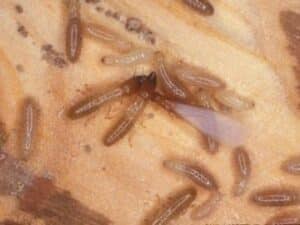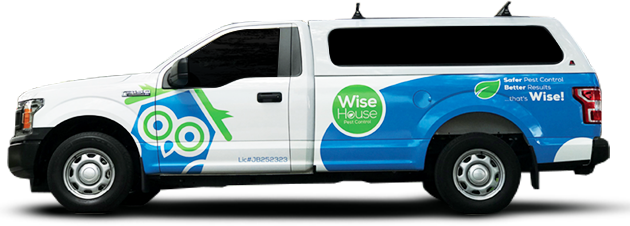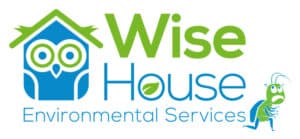South Florida’s warm and humid climate makes it a paradise not just for people, but also for pests like drywood termites. These wood-loving insects can cause significant damage to homes, often going unnoticed until it’s too late.
Knowing the signs of an infestation and knowing how to effectively manage these pests is absolutely important. Implementing safety measures are essential for protecting your home and property. In this post we cover what South Florida homeowners need to know about drywood termites.

Drywood termites are a type of wood-eating insect that can thrive without soil contact, which makes them especially damaging because they can infiltrate and persist undetected within wooden structures. Unlike their subterranean counterparts, drywood termites extract the moisture they need from the wood they consume and can be found in warmer coastal regions, such as in parts of the United States including Florida and California.
These termites are larger than many other species, with adults ranging from about 1/4 to 1/2 inch long, including the swarmers, which are capable of starting new colonies. Regular inspections and prompt treatment are very important due to their discrete living habits.
Drywood termite infestations can be difficult to detect until considerable damage has been done. Recognizing the signs early can help you address the problem before it becomes severe. Here are a few signs of drywood termite infestation to look out for:
Drywood termites generate droppings that are similar in color to wood as they feed on it. These droppings, referred to as frass, accumulate as tiny, powdery mounds close to wooden areas. Distinct from subterranean termites, drywood termites do not utilize their feces to construct tunnels, making the presence of frass a definite sign of their activity.
After swarming, drywood termites shed their wings. Finding piles of tiny, translucent wings inside your home, especially around window sills or light fixtures, can indicate a recent swarm and potential infestation.
Termites eat wood from the inside out, leaving a thin veneer of timber or paint. When you tap on an area that has been damaged by drywood termites, it may sound hollow or papery due to parts of the wood being eaten away.
Over time, you might notice tunnels in wood furniture or structural timbers. These tunnels, also known as galleries, are smooth and clean inside, as drywood termites eat across the grain of the wood.
As termites consume wood, their excrement creates moisture that can cause wood to warp. This warping can make doors and windows difficult to open.
The structural damage caused by termites can lead to cracks in plaster or drywall. While these cracks can also be due to other issues, they should be investigated if you see other signs of termite activity.
Drywood termites can create tiny pinhole openings through which they expel frass. These holes might be hard to spot, but they can often be found in areas where drywall appears slightly discolored or where paint has tiny imperfections.
If you listen closely, especially at night, you might hear a faint clicking or tapping sound coming from the walls. Termites make this sound while they dig into wood or when member termites tap their beaks on wood to warn of an impending threat.
If you suspect that your home is infested with drywood termites, it’s important that you act quickly.
Professional Pest Control
Professional pest control services are highly recommended for dealing with drywood termites due to their covert nature and the substantial damage they can cause. Specialists in pest management are equipped to conduct detailed inspections using advanced tools and techniques to identify even the most hidden infestations. Once identified, these pest control professionals can apply the most effective treatment options tailored to the severity and location of the infestation, ensuring thorough eradication and minimizing the risk of future issues.
Heat Treatment
Heat treatment is a non-chemical approach ideal for eliminating drywood termites in infested wood by exposing them to high temperatures. This process involves heating the affected areas to between 120°F and 140°F for a specific duration, which is lethal to termites. Heat treatment is particularly valued for its environmental friendliness, as it avoids chemical use, and for its ability to penetrate deep into wood structures, ensuring a comprehensive eradication of the termites.
Fumigation
In cases of extensive termite infestation, whole-house fumigation may be necessary. This method involves enclosing the entire home or structure in a tent and introducing a gaseous pesticide that permeates all wood surfaces. Fumigation is highly effective in reaching termites hidden deep within structures, ensuring complete eradication of the infestation. Although it requires significant preparation, including vacating the home for several days, fumigation is often a good option for severe and widespread infestations.
When dealing with termites and termite treatments, safety should always be a priority. Here’s how you can ensure safety during the termite treatment process:
It’s crucial to have a thorough discussion with your pest control provider about the safest and most effective treatment options available. This choice should consider the specific needs of your household, including the presence of children, pets, or sensitive plants.
Different treatments carry different risks and benefits. A pest control management company can help assess the severity of the infestation and recommend a suitable treatment plan that minimizes risk to your family and pets.
Pre-Treatment Preparations
Preparing your home for termite treatment is important for the safety of all occupants as well as treatment effectiveness. A pest control company will give you specific instructions regarding each treatment option. Some measures may include:
Preventing drywood termite infestations is important for maintaining the structural integrity of your home. By taking proactive measures, you can reduce the likelihood of termites establishing themselves and causing significant damage. Here are some prevention tips to help safeguard your home against drywood termites:
Conduct regular inspections of your home to spot early signs of termite activity. Focus on areas like attic spaces, under the house, and other wood structures such as decks and fences. Look for signs such as frass (termite droppings), hollow sounding wood, and visible tunnels in wood.
Consider scheduling a routine inspection with a pest control professional such as Wise House Environmental Services. They have the tools and expertise to detect infestations that might be missed during a casual inspection.
Termites often enter homes where wood touches the ground. Minimize this risk by keeping wood structures, such as siding, decking, and door frames, at least six inches above the soil. Use concrete bases or metal stands for wooden posts and other structural elements.
Regularly check landscaping features close to your home. Ensure that mulch, plants, and other organic materials do not touch your home’s siding or foundation, as they can facilitate termite access.
Inspect the exterior of your home for cracks in the foundation, loose siding, or gaps around windows and doors. Seal these entry points with caulk, expanding foam, or other suitable sealants to deter termites from entering.
Pay special attention to areas where utility lines and pipes enter your home. These can provide easy access for termites if not properly sealed. Use escutcheon rings or similar barriers to close these gaps.
Ensure that your attic, crawl spaces and garages are well-ventilated. Proper air circulation helps to keep these areas dry and less attractive to termites, which prefer moist environments.
In regions with high humidity, consider using dehumidifiers in prone areas to maintain a dry environment. This is particularly important in enclosed spaces where air circulation is limited.
Termite identification for drywood species involves looking for a few key characteristics. These termites are typically about 3/8 to 1 inch long, have a smooth body, and are usually light brown in color. Unlike subterranean termites, they do not require contact with the soil.
Signs of termite damage from drywood termites include visible tunnels in wood, fine powdery frass (wooden feces) that resembles sawdust, and weakened or hollow-sounding wood structures. Damage often appears more extensive as these termites cut across the wood grain, consuming both spring and summer wood.
To get rid of drywood termites effectively, professional termite control services are recommended. Professionals utilize methods like localized treatments, whole-structure fumigation, and heat treatments to eradicate these pests comprehensively.
Winged termites, or swarmers, are reproductive termites that leave their colony to start new ones. Seeing these winged termites inside your home often indicates an existing drywood termite infestation and the potential for the formation of new colonies.
Professional termite control services offer several effective treatments for drywood termites, including spot treatments, structural fumigation for widespread infestations, and non-chemical methods like heat treatments that eliminate termites by raising the temperature to lethal levels inside infested wood.
Recognizing the type of termite involves observing the physical characteristics and behaviors of the termites. Drywood termites are identified by their solid fecal pellets, lack of a connection to the soil, and the tendency to form small, slow-growing colonies within wooden structures.
Understanding drywood termite colonies is crucial in managing an infestation as these colonies can exist solely within a piece of furniture or a section of your home without any soil contact. Knowing their behavior and colony structure helps in targeting treatment methods effectively to eradicate the colony completely.

Ready to send away pests without harming your pets? Getting started with Wise House Environmental Services is as easy as 1-2-3:
With Wise House Environmental Services, you get more than just effective pest control; you get peace of mind, knowing that your home is without pests and safer for your pets.
Our approach to pest control combines science with safety, offering you the kind of targeted, effective solutions that you won’t find with just any other pest control service. Our services have made a world of difference for homeowners, and we can do the same for you. Your pets will thank you for it!
We serve Port St. Lucie,Lake Worth, Boyton Beach, Palm Beachand the Treasure Coast.


© 2023 All Rights Reserved. | Sitemap